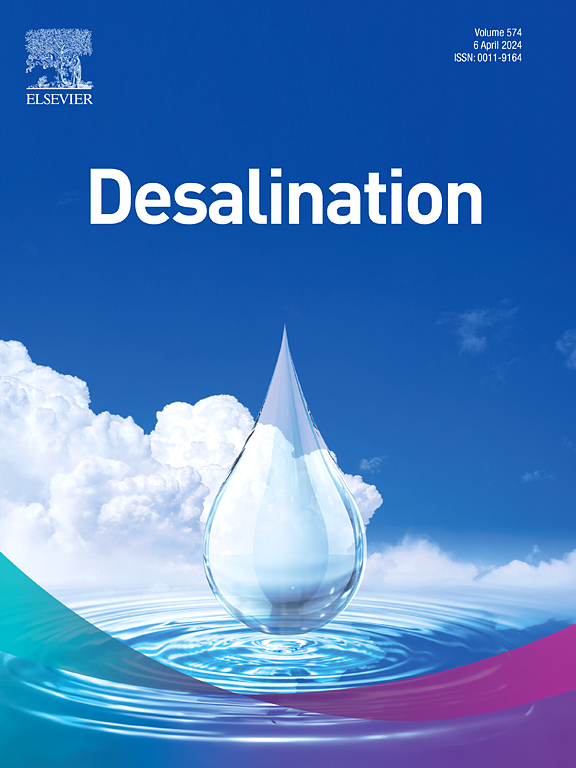Renewable energy powered membrane technology: Electro-hydraulic control system design for managing pump shutdowns in a photovoltaic-membrane water desalination system
IF 8.3
1区 工程技术
Q1 ENGINEERING, CHEMICAL
引用次数: 0
Abstract
The electrical shutdown of the pump during the period of solar irradiance (SI) fluctuations is one of the major challenges of a photovoltaic-powered membrane desalination (PV-membrane) system, leading to intermittent operation, reduced daily production and lower water quality. Conventional energy buffering methods, using electrical storage (batteries or supercapacitors) or mechanical storage (pressure accumulators), provide only temporary buffering, however, cannot prevent pump shutdowns. Direct control of PV-membrane hydrodynamics, independent of energy buffering systems, remains an underexplored solution to this issue. In this study, an electrohydraulic control system (EHCS) was developed to dynamically minimise pump shutdowns during unfavorable weather conditions across different membrane types. The system achieves this by rapidly reducing the load pressure on the pump via fast-response control actions using an electrically actuated valve. Experimental results demonstrate that the EHCS (without buffering support) increased daily water production by 7.5 % for the BW30 membrane and 14.6 % for the NF90 membrane under highly cloudy conditions. Additionally, pump shutdowns were reduced by 86 % for the BW30 membrane and 57 % for the NF90 membrane. The findings highlight the EHCS as an effective alternative for managing PV-membrane system performance during SI fluctuations, offering a robust solution without reliance on energy buffering systems.

求助全文
约1分钟内获得全文
求助全文
来源期刊

Desalination
工程技术-工程:化工
CiteScore
14.60
自引率
20.20%
发文量
619
审稿时长
41 days
期刊介绍:
Desalination is a scholarly journal that focuses on the field of desalination materials, processes, and associated technologies. It encompasses a wide range of disciplines and aims to publish exceptional papers in this area.
The journal invites submissions that explicitly revolve around water desalting and its applications to various sources such as seawater, groundwater, and wastewater. It particularly encourages research on diverse desalination methods including thermal, membrane, sorption, and hybrid processes.
By providing a platform for innovative studies, Desalination aims to advance the understanding and development of desalination technologies, promoting sustainable solutions for water scarcity challenges.
 求助内容:
求助内容: 应助结果提醒方式:
应助结果提醒方式:


